Applications
Wound healing assays
Migration assays
2D invasion assays
Co-cultivation of cells
Specifications
| Number of wells | 2 |
| Outer dimensions | 8.4 x 8.4 x 5 mm (w x l x h) |
| Volume per well | 70 µl |
| Growth area per well | 0.22 cm² |
| Coating area per well | 0.82 cm² |
| Width of cell free gap | 500 µm +/- 100 µm |
| Material | Biocompatible silicone |
| Bottom | No bottom - sticky underside |
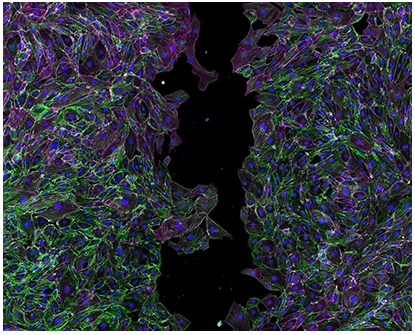
Endothelial cells cultured in a µ-Dish 35 mm, high with a Culture-Insert 2 Well. Image by Derek Sung, University of Pennsylvania School of Medicine, USA.
Technical Features
Culture-Insert 2 Well, pre-inserted into:
µ-Dish 35 mm, high (imaging dish with standard 12 mm walls), or
µ-Dish 35 mm, low (imaging dish with low 7 mm walls)
Biocompatible silicone material with adhesive underside
Ready-to-use: the Culture-Insert is already placed in the µ-Dish 35 mm, high or µ-Dish 35 mm, low
Clean surface after insert removal without remaining material
Find full specifications and technical details here: µ-Dish 35 mm, high | µ-Dish 35 mm, low
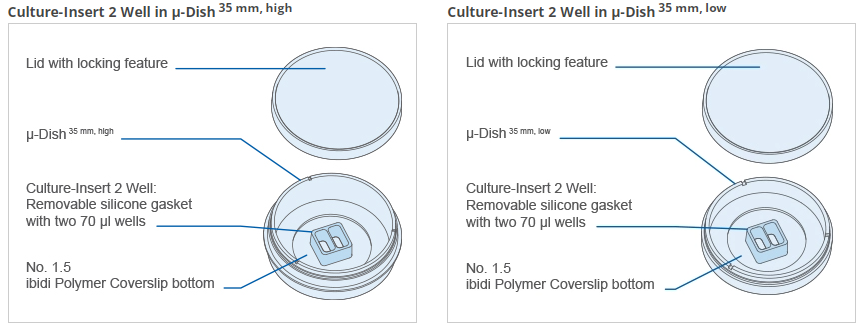
Principle for Wound Healing and Migration Assays

Visualization of Cell Migration in Wound Healing Assays
Wound healing and migration assays are done by seeding cells into the Culture-Insert 2 Well. After cell attachment, a cell-free gap is created in which the cell migration can be visualized.

Cell Invasion of Co-Culture Assays
The Culture-Insert 2 Well can also be used for seeding two different cell types. After the removal of the insert, the cell fronts can be analyzed for their invasional behavior.
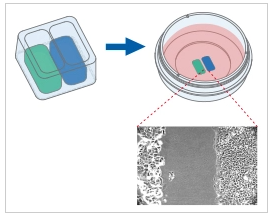
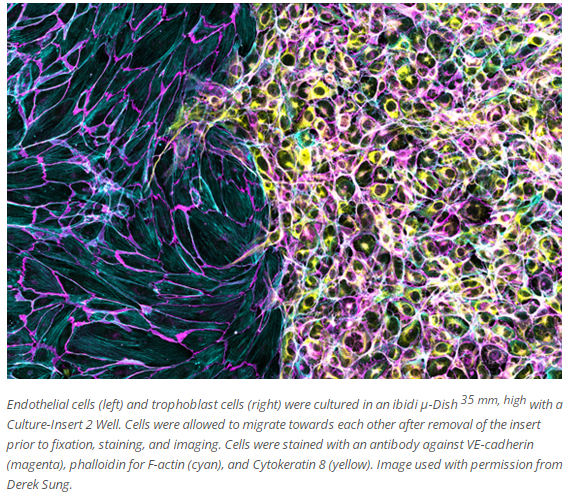
Culture-Inserts vs. Scratch Assay
At first glance, the methods of scratching and placing a Culture-Insert seem to be two very similar approaches to create a cell-free gap. However, at a closer look, these two methods differ in important aspects that could influence the outcome of the assay:
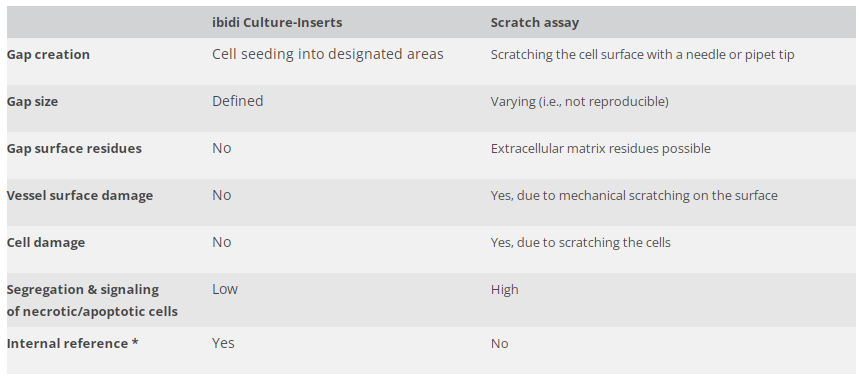

The ibidi Culture-Inserts provide improved reproducibility when compared with a scratch assay
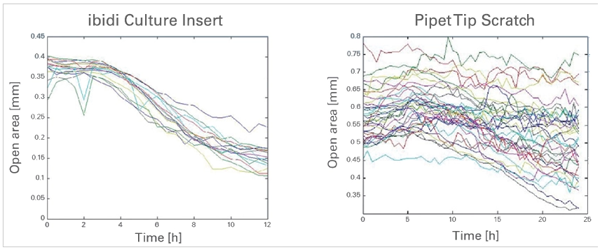
Time-dependent changes of the open area due to cell migration. A comparison between gap creation by using the ibidi Culture-Insert 2 Well (left) and by scratching with a pipet tip. Data provided by M. Börries, University Freiburg, Germany.















